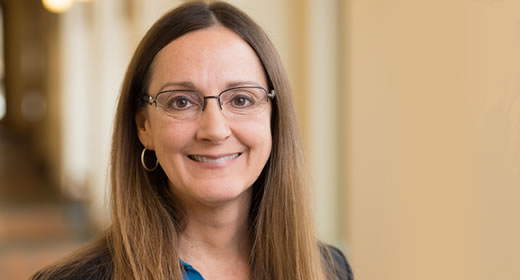
A key Ford School priority is to engage more and better with external organizations and communities, leveraging Ford’s capacity and expertise, interdisciplinary approaches, and ability to assemble a network of policy-engaged university faculty. Building on ongoing work by many of the School’s faculty and students, this involves creating engaged teaching and learning opportunities for U-M students, supporting faculty and students in engaged policy research, and translating research into action to create policy impact. Below, Elisabeth Gerber, Ford’s Associate Dean for Research and Policy Engagement, talks to State & Hill about this effort.
State & Hill: These engaged initiatives seem aligned with President Schlissel’s wish for units to collaborate within and beyond the University.
Gerber: President Schlissel wants the University to have greater public impact. I and many other faculty love working with external organizations to create mutual benefits. Academics may lack tools to solve big social and policy problems. Government or nonprofits may also lack some tools. So we come together and collaborate to improve the quality of life for our communities. That is central to our mission as a public university.
Don’t some campus organizations already exist to help faculty make external connections?
Yes. But we encourage faculty to start with personal decisions about what can they bring to the table to help people directly. The University’s growth and survival depend on the world understanding and engaging with what it does. We want faculty and students go to a community organization and say, ‘Let’s work together to solve problems.’ We do a lot of practical policy engagement already. For example, many of my students work on supervised consulting projects on problems external partners bring to us. When our students work on these projects, external partners are blown away.
What kinds of external partners do you work with?
Nonprofits, foundations, churches, government, the whole gamut of stake-holders in public policy. From us, the organization gets capacity, insight and knowledge to serve the broader public; and from them, we get opportunities for students and faculty.
Is there one specific project with which you have been especially happy?
Last year a team of students worked with the Michigan Department of Civil Rights. They wanted to create a community engagement model for increasing racial equity, but they didn’t have the capacity. Our students created a toolkit to help municipal governments make action plans for racial equity. Department staff came to Ford for the final presentation, and they were blown away by the work the students did. The toolkits gave local governments specific steps to take as front-line actors engaging citizens and enhancing racial equity. The Department is very keen to continue with us.
But you have also worked with nonprofits.
Yes. For example, we had three students working with Glen Mills Schools, a residential school near Philadelphia, where boys involved with the criminal justice system may be placed. Those making the placements preferred community-based approaches, rather than residential. Glen Mills needed to update its practices and tell its story better. They had data, but they didn’t know how to analyze it and extract what would help them demonstrate success. Our students designed surveys and strategies for following up with Glen Mills alums, and they made recommendations about what the school should do with their administrative data. The client was extremely happy.
What would you wish to add to these existing types of engagement?
We should provide structure around what we’re already doing. External relationship-building and maintenance take time. Faculty may be good at working with community partners in the moment but not so good at finding those partners or maintaining relationships long term. A big part of this push is finding professionals to help us identify, manage and maintain outside partners. We can find mentors—perhaps alumni or prior research partners—who can help us sustain these relationships and make them more productive. We can also partner with other U-M schools and programs in teaching and research. Ford is nimble and lean. We know how to get data-sharing agreements and move grant proposals. We are excited to help others on campus do this kind of engaged collaboration and have an impact.
--Story by David Pratt
Below is a formatted version of this article from State & Hill, the magazine of the Ford School. View the entire Spring 2018 State & Hill.